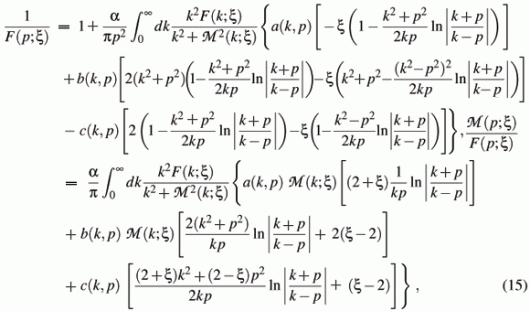
Arithmetic equations:
3 = 3
3+1 = 4
2(3+1) = 12-4 simplify each side to an equivalent equation: 8=8
-2{3[5+(-7)]-4[-23+2(-3)2]} = 100/2+8*5+2
An equation is a logic statement. A statement can be true or false (one or the other,
not both, not neither, not maybe).
"False equations" (cf. lies)
3 = 4 is false 3 ≠ 4 is true
2(3+1) = 12-3
-2{3[5+(-7)]-4[-23+2(-3)2]} = 100/2+8*5+1
Need to check/verify its truth value. Mathpapa does equations.
In general:
algebraic expression = algebraic expression
Linear equation of one variable:
x = 5
2x-4 = 6
2x-4 = 6+5x
27-3(x+4) = 4x-(2x-20)
Quadratic equation (of one variable):
2x2-4x = 7
3x2-2x+7 = 6x+5x2
x2-13x+40 = 0
5x2 = 7
Linear equation of two variables:
y = -3x+5
3+2y-x = 4(2y-x)+5x-2
x3+y2-4x+2y-1=0
WTF equation.
Linear equation of one variable:
What value/number makes the equation true when substituted for the variable,
i.e. when evaluate the two sides of the equation.
What "true replacement" for the variable.
x = 5 x is 5. Know what x is. Already "solved" for x.
It's obvious what number x needs to be to be equal to 5.
5 is the solution.
An equation in this form (x=number) is in the solved form.
2x-4 = 6 Need to solve this for x to know what x is (what it equals).
Manipulate the equation into an equivalent equation that has the variable by itself
on one side of the equation, i.e. x=, the other side being a single number, which is the solution,
the true replacement for x that makes this equation true.
Manipulate the equation: do the same thing (number, variable, expression) to both sides of the equation
and it's still an equation: Operations to do:
Add same thing to both sides.
Subtract same thing from both sides.
Multiply both sides by same thing.
Divide both sides by same thing.
1. Simplify side(s) if necessary. 2. Perform operations to get variable on one side, numbers on other side.
3. divide by variable's coefficient, if not 1.
2x-4 = 6 Add 4 to both sides: 2x=10
Divide both sides by 2: x=5
Linear equations of one variable of our book have one solution.
[In general, a linear equation of one variable can have an
infinite number of solutions e.g. x=x, or no solutions, e.g. x=x+1 ]
Number of solutions of a linear equation of one variable: 0, 1, or ∞
Mathpapa can solve linear equations of one variable and verify that a solution is indeed
a true replacement for the variable.
Quadratic equation (of one variable) typically has two solutions (or one, or none).
x2+4x = 5 has solutions 1 and -5.
Equation of more than one variable can not be solved (in the sense of finding the true replacement(s) for the variables since typically there are an infinite number of combinations of values for the variables that make the equation true.
Equations of two variables, say x and y:
The solutions are pairs of (x,y) combinations that make the equation true;
there can be an infinite number of such solutions,
each can be plotted as a point in the Cartesian XY rectangular coordinate plane
forming either a (straight) line if it is a linear equation of two variables or a curve
if it is non-linear.
The solution set can be displayed as the graph of the equation of two variables in
the Cartesian plane. Every equation of two variables has a graph that is a line or curve
(in its domain). A "curve" can be in several "pieces".
Simplest equation of two variables: y = x
Adding or subtracting the same value from both sides of the equation has no effect.
Multiplying or dividing both sides of the equation by the same value has no effect.
2y = 2x y+1 = x+1 2y+1 = 2x+1
are all just changing the form of y = x.
Look at the graphs of:
y = 3
y = x
y = x2
y2 = x
y = x3
y2 = x3
y2 = 1/x2
x3+y2-4x+2y-1=0
x2+(y-x⅔)2=1
Folium of Descartes: x3+y3-3xy=0
Kampyle of Eudoxus: x4=x2+y2
Tschirnhausen cubic: y2=x3+3x2
Crooked egg: (x2+y2)2=x3+y3
Equations can be rather complicated.
